Results 1 to 4 of 4
Thread Information
Users Browsing this Thread
There are currently 1 users browsing this thread. (0 members and 1 guests)
-
10-21-2014, 05:13 PM #1Senior Member


- Join Date
- May 2007
- Location
- South West Florida (Behind friendly lines but still in Occupied Territory)
- Posts
- 117,696
RedState: Arkansas Senate: …DOOM. Senate Breakers Report October 21, 2014

Arkansas Senate: …DOOM.
By: Moe Lane (Diary) | October 21st, 2014 at 04:00 PM |
The Arkansas Senate election is now over*.
Arkansas Democratic Sen. Mark Pryor (D-AR)HeritageActionScorecard
 Sen. Mark Pryor
Sen. Mark Pryor
Senate Democrat Average See Full Scorecard 9% argued that the federal government’s desegregation of Arkansas’s largest public school in 1957 was an “unwilling invasion” that took “a local problem out of the local authorities’ hands” and led to deep suspicions of democracy in the state, according to a copy of his college thesis obtained by the Washington Free Beacon.
Written in 1985, the 30-page paper—which also suggested that the state’s Democratic Party was hindering economic progress, and attributed policies such as welfare and the Equal Rights Amendment to “wild-eyed liberals”—could add to Pryor’s difficulties as he fights to protect his seat from Republican challenger Rep. Tom Cotton (R-AR)Heritage ActionScorecard
 Rep. Tom Cotton
Rep. Tom Cotton
House Republican Average See Full Scorecard 82%.
Gee, you think? Pryor went on to declare that desegregation was the reason why the Democratic party went on dominate Arkansas politics for the next generation or so; in point of fact, he compared the Little Rock school desegregation to the American Civil War. Whether or not this moves the needle among white Arkansas Democrats or not is one question (one hopes that it does not in fact appeal to them); but nationally… seriously, folks? The DSCC is actually going to keep supporting financially a candidate who thought that the US government made a tragic mistake in making sure that the Little Rock Nine were able to go to a whites-only high school?
And let’s not even bring up the fact that this thesis of Pryor’s argues mightily that the Democratic party’s single most favorite piece of political mythology – the so-called ‘Southern Strategy’ – was and is a lie told to the credulous, given that in Arkansas the Democratic party continued to dominate the state for decades. Oh, wait, I just did bring that up. My bad. Guess we’ll see just how poorly the Democratic party thinks of its own base…
Moe Lane (crosspost)
PS: OK, I’ll admit it. I will enjoy mightily watching Democratic apologists try to explain why Mark Pryor could casually urinate all over the Democrats’ narrative like this and expect to get away with it, mostly because his daddy was a Senator, too. It should be a hoot.
*OK, OK, it’s been over for a while now and Tom Cotton is going to win. But this event counts as a moment of clarity.
http://www.redstate.com/2014/10/21/a...s-senate-doom/Join our efforts to Secure America's Borders and End Illegal Immigration by Joining ALIPAC's E-Mail Alerts network (CLICK HERE)
-
10-21-2014, 05:20 PM #2Senior Member


- Join Date
- May 2007
- Location
- South West Florida (Behind friendly lines but still in Occupied Territory)
- Posts
- 117,696
Senate Breakers Report October 21, 2014
Breaking Better
By: Dan McLaughlin (Diary) | October 21st, 2014 at 05:00 PM |

Since I last looked at the Senate races 11 days ago, the picture of the home stretch has started to come a little more clearly into focus, albeit with a frustratingly large number of undecided voters still showing up in the polls even in states that have already begun early voting. The high number of undecideds is one of several reasons to question the reliability of this year’s polls, although the most likely reason for a surplus of undecideds is that some of those folks are just going to end up staying home – a result that would be good news for GOP candidates who have pulled out to a polling lead (as in Colorado, Iowa and Kentucky) but not so good for candidates in North Carolina and New Hampshire who are crouched in striking distance but still need to be persuading people. However, if you look at the broader trends in the presidential approval and generic ballot polling, you can see that things are again looking up for Republicans – if they can only capitalize on those opportunities.
I’ll return to the Governors’ races separately soon. You can read my prior posts in this series for an explanation of the methodology.

I’ve italicized West Virginia, Mississippi and Oregon because there’s no new polling since my last post. I’m also now including Sean Haugh, the Libertarian Party candidate in North Carolina, since RCP now carries a 3-way average and he’s consistently polling around 5% (although history suggests he will likely end up below that). As you can see, there’s still a ton of undecideds in some of these races (hello Michigan), but more and more of them are getting below 10% undecided.
You’ve probably seen a lot of hue and cry about South Dakota, and the average here – as with Georgia – is a little misleading because the two most recent polls show a tighter race. But unless (as has happened before in this part of the country) the polls are really off, it’s hard to see Rick Weiland having a realistic path to victory, especially because the opportunity to catch Mike Rounds napping has already been lost, and resources are pouring in to shore him up. That said, we probably need another couple of polls to get a fix on whether things are really shifting in South Dakota.
In Kansas, I stand by the view that, if Sen. Pat Roberts (R-KS)Heritage ActionScorecard
 Sen. Pat Roberts
Sen. Pat Roberts
Senate Republican Average See Full Scorecard 93% pulls ahead of Orman, he’ll be ahead to stay, given the 2014 environment and the natural partisan tilt of the state. Right now, they’re tied in the average, with the trend seeming to favor Roberts, so the next poll or two will bear close watching there as well.
The trend has been positive enough in New Hampshire and North Carolina to suggest some GOP momentum there as well. Here’s the overall trend since October 1 across all the Senate races:

If you zero in on the ten closest races (where the top 2 candidates are separated by less than 9 points), you see a more pronounced trend of the GOP candidates widening their leads and moving from below 45 points to above 46, exactly the kind of movement we would expect to see if undecided voters are gradually moving into the GOP column:

The other “fundamental” indicators are favorable as well, like the generic ballot, which had tightened briefly but is now breaking back open to a GOP lead, a result consistent with what we are seeing in terms of polling and resource allocation in House races across the country:

Then there’s the recent regression in Obama’s approval rating after a brief recovery:

And in the states where we have enough polling to have an approval rating average for Obama, you can see that (except for Sen. Jeanne Shaheen (D-NH)Heritage ActionScorecard
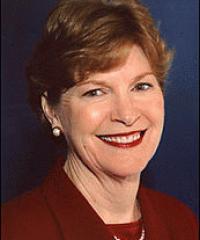 Sen. Jeanne Shaheen
Sen. Jeanne Shaheen
Senate Democrat Average See Full Scorecard 6% in New Hampshire) the ranking of the Senate races is shaping up about where you would predict from the President’s approval alone:

We don’t know what the elections will deliver, but the RCP “no leaners” poll average has the GOP gaining 8 seats in the Senate (to 53), and right now, that seems like the reasonable median forecast – and R+10 and 55 seats, while the optimistic scenario, hardly seems like a major stretch at all if North Carolina and New Hampshire fall. Beyond 55 is more in the nature of wishcasting, and of course the Democrats have the same reasons to hold out hope for Georgia, Kansas and South Dakota that Republicans do in North Carolina and New Hampshire.
There’s still reasons to think the polls may be wrong, as Sean Trende, Nate Silver and Mark Blumenthal explain, and I’ll return to that topic another day – but as Trende and Silver note, there’s no particularly reliable way to tell in advance which direction they might be wrong in.
I will say this: we have public polls, but the parties have lots more polls than the public does, and therefore have a clearer picture of the landscape – and very little in the behavior of the Democrats in particular leads me to think they are confident that things look less grim than the picture painted for them by the public polls. You can see the desperation in any number of their recent campaign tactics, but I will leave you with this lovely montage of excerpts from recent Democratic fundraising emails quoting, over and over and over again, a single line from a single ABC News report, without even mentioning that that very article said Republicans “still seem on track” to retake the Senate:

http://www.redstate.com/2014/10/21/s...tober-21-2014/Join our efforts to Secure America's Borders and End Illegal Immigration by Joining ALIPAC's E-Mail Alerts network (CLICK HERE)
-
10-22-2014, 05:03 PM #3Senior Member


- Join Date
- May 2007
- Location
- South West Florida (Behind friendly lines but still in Occupied Territory)
- Posts
- 117,696

Governors Breakers Report October 22, 2014
Breakers and Stragglers
By: Dan McLaughlin (Diary) | October 22nd, 2014 at 04:00 PM |

As promised yesterday, the second half of the latest installment of my roundup of the RCP polling averages (these for the Governor’s races), looking at what share of the remaining undecided vote would need to break in the GOP’s direction to win each race. The overall trend across numerous races since October 1 (even since yesterday, when I started gathering these figures) is positive, but a lot of these races remain incredibly close, and several high-profile races have had disappointing news.
First up, the big board:

There have been new polls in every race since October 1, thanks in large part to YouGov polling every race, although many of the less competitive races have not been polled in almost three weeks. Nebraska is now the only race without enough polls to compute an average. The biggest change is that we finally have some polling in Arizona, showing Doug Ducey out to a much healthier lead than the sparse polling had previously indicated.
The most worrisome races right now:
-Wisconsin, where the most recent poll nudged Mary Burke ahead of Scott Walker, and where there are very few undecided voters left to pick from after three Walker gubernatorial campaigns in five years. Walker, if he wins, will be a formidable national candidate, but this race is putting his ability to seal the deal and get his voters out to a stern test, and one has to think that the unsecret nature of his national ambitions aren’t helping him in a blue state.
-Florida, where Rick Scott got a ton of terrible press from an unforced error in “Fangate,” refusing to go onstage at the beginning of a debate because Charlie Crist had violated debate rules by bringing his omnipresent fan to blow cold air up Orange Charlie’s trousers. You can’t really blame the voters for despising both of these candidates, but Republicans will have to bank on the economic progress made on Scott’s watch and the staggering degree of Crist’s craven, unprincipled opportunism.
-Illinois, where Pat Quinn pulled off a miraculous escape in 2010 (running ahead of his party’s Senate ticket, which lost to Sen. Mark Kirk (R-IL)Heritage ActionScorecard
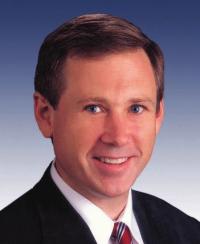 Sen. Mark Kirk
Sen. Mark Kirk
Senate Republican Average See Full Scorecard 38%) and has a slight lead over self-funding tycoon Bruce Rauner.
-Alaska, where Sean Parnell is 2.5 points back of the “independent” Walker-Mallot ticket, although Alaska is notorious for bad polling in general and polls that understate Republican strength in particular.
Many of the other races with Republican leads are extraordinarily tight, especially in New England, where the GOP leads in Massachusetts and Connecticut by a hair and trails slightly in an ugly three-way race in Maine (Rhode Island remains a tantalizing possibility – recall that as recently as 2006, there were GOP governors in Massachusetts, Connecticut, Vermont, Rhode Island and New York). And as I noted this morning over at The Federalist, the trend in recent years has been for Democrats to win an indordinate share of statewide elections decided by less than 1 point, so just going into Election Day with a tiny lead is no reason to get comfortable (although you’d still rather be ahead in the polls than behind).
The overall trend since October 1 has been positive in many more races than it’s been negative:

That’s a nice recovery by Tom Corbett, but he’s still toast. Larry Hogan is also putting enough pressure on Anthony Brown that the White House felt compelled to dispatch the president to stump for Brown. Let’s zero in on the trendline in the 16 most competitive races:

Republicans have gained at least a point in their standing in twice as many races as the Democrats have, albeit in some cases (like New Hampshire) cutting into a lead that will likely prove insurmountable. But the news has gotten less nerve-racking for Sam Brownback and more comfortable for Rick Snyder in their re-election bids. The average across these races is a 1.4 point improvement for Republicans, but notice that unlike the Senate races, we’re still dealing with an average poll standing of 43.6 points for the Republicans across these races, 43.4 for the Democrats – which leaves an awful lot of undecided voters less than two weeks from Election Day.
http://www.redstate.com/2014/10/22/g...tober-22-2014/Join our efforts to Secure America's Borders and End Illegal Immigration by Joining ALIPAC's E-Mail Alerts network (CLICK HERE)
-
11-04-2014, 12:41 AM #4Senior Member


- Join Date
- May 2007
- Location
- South West Florida (Behind friendly lines but still in Occupied Territory)
- Posts
- 117,696

Final Senate Breakers & Governors Breakers Report November 3, 2014
Into The Unknown
By: Dan McLaughlin (Diary) | November 3rd, 2014 at 05:47 PM | 4

Here we are: the end of the campaigns. We have likely seen our last polls. And yet, they seem unsatisfying. The mood in 2006 and 2010 was clear: the President’s party was going to suffer, and the only question was how much. That’s true today as well, but in some ways this feels more like the eve of the 2002 election in the sense that there remain an awful lot of close races, there seem still to be a lot of undecided voters, and so even though the broad outlines of what will happen are fairly clear, many individual races are likely to keep us in suspense:
-In seven Senate races and nine Governors’ races, the combatants are separated by 2.7 points or less; in four of those races, by less than a point.
-In seven Senate races and twelve Governors’ races, the leader in the polls is below 47%; in six of those races, including both of the head-to-head races in Kansas, no candidate is above 45%. Sen. Al Franken (D-MN)Heritage ActionScorecard Sen. Al Franken
Sen. Al Franken Senate Democrat Average
Senate Democrat Average See Full Scorecard0% in 2008 is the only Senate candidate since 2002 to win a race where he was polling below 45% going into the election, but somebody has to win.
See Full Scorecard0% in 2008 is the only Senate candidate since 2002 to win a race where he was polling below 45% going into the election, but somebody has to win.
Republicans burned by the poll controversies of 2012 remain gunshy about getting out ahead of the polls, when we know that most polls are right most of the time. And yet, the uncertainty is asymmetrical: there remains a lot more upside for Republicans than downside. The polls are not predicting a major GOP wave, and a fairly small ripple in either direction from the current projection is possible. But they are also not ruling out the possibility of a final cascade that makes this a very good election for Republicans indeed.
Overall, the most likely outcome is R+7 (52 seats) or R+8 (53) in the Senate, counting the final results after all runoffs. A few bad poll misses in Alaska, Colorado, and Iowa could still put the GOP short of a majority, but only a small amount of good fortune would put Republicans at R+10 and 55 Senators. And it’s still possible we could see an upside surprise beyond that. My final prediction is R+8. In the Governors’ races, the field is much more wide open, and we could see anywhere from D+5 to R+5; while there’s a lot more guesswork involved here, my final prediction is R+2.
The Senate Races

(These averages don’t include the final PPP polls that just dropped, which have Ernst up 3 in Iowa – since mid-September she’s led in 16 polls compared to 3 for Braley and 6 ties – and otherwise 1 to 2 point Democratic leads in Kansas, New Hampshire and North Carolina and less than a 1 point lead for Perdue in Georgia)
The final Senate scoreboard needs little explanation by this point, as there’s not much else to do besides see the final results to see if the tightening of the Iowa race brings bad news, or the polls prove wrong (as they’d have to be) in Alaska and Colorado. Georgia looks a lot less worrisome than it did even a week ago. Let’s note the trend shift from last week’s polls:

Across the contested races with fresh polling, and even with the ongoing implosion of Terri Lynn Land in Michigan, the races shifted 0.6 points on average in the GOP’s direction (0.8 not counting Michigan), as Sen. Mitch McConnell (R-KY)Heritage ActionScorecard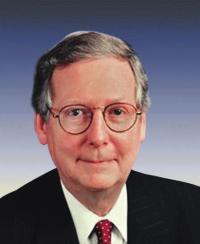 Sen. Mitch McConnell
Sen. Mitch McConnell Senate Republican Average
Senate Republican Average See Full Scorecard68% and Rep. Tom Cotton (R-AR)Heritage ActionScorecard
See Full Scorecard68% and Rep. Tom Cotton (R-AR)Heritage ActionScorecard Rep. Tom Cotton
Rep. Tom Cotton House Republican Average
House Republican Average See Full Scorecard82% seem to be putting their races away at the end, New Hampshire keeps tightening, while momentum in Virginia in particular has accelerated. If I was going to pick one “shocker” race it would be Virginia rather than Minnesota or Illinois or the blowouts in Michigan and Oregon. I’ve argued all along that Ed Gillespie had momentum and would tighten the race but was going to run out of time, and all the rational poll indicators show that’s exactly what’s happened, sort of the way Ken Cuccinnelli made a late run this time last year and came up short. But now and then, elections that have flown under the radar do surprise, there’s nothing else contested in Virginia, and despite his personal popularity Sen. Mark Warner (D-VA)Heritage ActionScorecard
See Full Scorecard82% seem to be putting their races away at the end, New Hampshire keeps tightening, while momentum in Virginia in particular has accelerated. If I was going to pick one “shocker” race it would be Virginia rather than Minnesota or Illinois or the blowouts in Michigan and Oregon. I’ve argued all along that Ed Gillespie had momentum and would tighten the race but was going to run out of time, and all the rational poll indicators show that’s exactly what’s happened, sort of the way Ken Cuccinnelli made a late run this time last year and came up short. But now and then, elections that have flown under the radar do surprise, there’s nothing else contested in Virginia, and despite his personal popularity Sen. Mark Warner (D-VA)Heritage ActionScorecard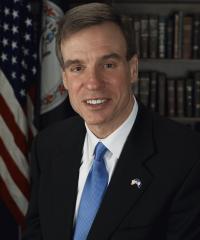 Sen. Mark Warner
Sen. Mark Warner Senate Democrat Average
Senate Democrat Average See Full Scorecard2% has been stalled below 50% for a while, and the last few polls (albeit, some of them from rather dubious pollsters) show a tighter race. Gillespie is less of a lightning rod than Cuccinelli, Warner has been engulfed in scandal the last month, and Gillespie has even been making hay on Sen. Harry Reid (D-NV)Heritage ActionScorecard
See Full Scorecard2% has been stalled below 50% for a while, and the last few polls (albeit, some of them from rather dubious pollsters) show a tighter race. Gillespie is less of a lightning rod than Cuccinelli, Warner has been engulfed in scandal the last month, and Gillespie has even been making hay on Sen. Harry Reid (D-NV)Heritage ActionScorecard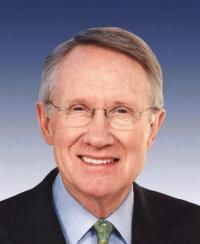 Sen. Harry Reid
Sen. Harry Reid Senate Democrat Average
Senate Democrat Average See Full Scorecard11%‘s support for using federal power to change the Washington Redksins’ name (a deeply unpopular cause in Northern Virginia). The other possible outside surprise is the thinly-polled race in New Mexico, where the GOP is running off with the Governor’s race. My point is not that these races are all that likely to end closer than a 7 or 8 point GOP loss, but simply that if there’s some polling error and a big break of the last deciding voters towards the GOP, you could see some big surprises – whereas there really is not all that much likeihood of any races that are that lopsided in the polls going the other way. For completeness, here’s the rest of the Senate races; New Jersey has slipped into this tier (I threw Delaware into the big chart in its place, although that race shows no sign of being competitive; I also left off Alabama, where Sen. Jeff Sessions (R-AL)Heritage ActionScorecard
See Full Scorecard11%‘s support for using federal power to change the Washington Redksins’ name (a deeply unpopular cause in Northern Virginia). The other possible outside surprise is the thinly-polled race in New Mexico, where the GOP is running off with the Governor’s race. My point is not that these races are all that likely to end closer than a 7 or 8 point GOP loss, but simply that if there’s some polling error and a big break of the last deciding voters towards the GOP, you could see some big surprises – whereas there really is not all that much likeihood of any races that are that lopsided in the polls going the other way. For completeness, here’s the rest of the Senate races; New Jersey has slipped into this tier (I threw Delaware into the big chart in its place, although that race shows no sign of being competitive; I also left off Alabama, where Sen. Jeff Sessions (R-AL)Heritage ActionScorecard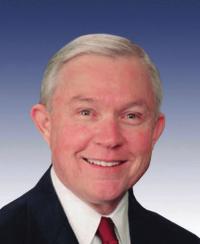 Sen. Jeff Sessions
Sen. Jeff Sessions Senate Republican Average
Senate Republican Average See Full Scorecard84% is running unopposed) – as with the Governor’s races, there are more truly safe Republican Senators than Democratic ones:
See Full Scorecard84% is running unopposed) – as with the Governor’s races, there are more truly safe Republican Senators than Democratic ones:

Notice that Lindsay Graham runs ten points behind Sen. Tim Scott (R-SC)Heritage ActionScorecard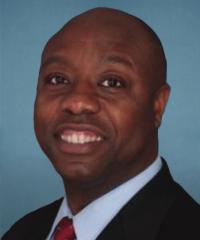 Sen. Tim Scott
Sen. Tim Scott Senate Republican Average
Senate Republican Average See Full Scorecard85% and – like Sen. Thad Cochran (R-MS)Heritage ActionScorecard
See Full Scorecard85% and – like Sen. Thad Cochran (R-MS)Heritage ActionScorecard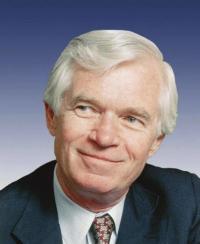 Sen. Thad Cochran
Sen. Thad Cochran Senate Republican Average
Senate Republican Average See Full Scorecard53% – struggles to get close to 50% in the polls, but nonetheless has a huge lead.
See Full Scorecard53% – struggles to get close to 50% in the polls, but nonetheless has a huge lead.
Which brings us to the three races in which Republicans trail but have a more realistic shot to surprise – Kansas, North Carolina and New Hampshire. The polling trend in the Kansas Senate race screams “we don’t like these candidates, can you please send us some new ones?”

Ironically, if Sam Brownback was in this race and Sen. Pat Roberts (R-KS)Heritage ActionScorecard Sen. Pat Roberts
Sen. Pat Roberts Senate Republican Average
Senate Republican Average See Full Scorecard93% was in the Governor’s race, you get the sense that both would be winning comfortably. The combination of (1) a huge number of undecideds in both races, (2) Kansas’ historic partisan tilt to the GOP, and (3) the President’s abysmal job approval with Kansas voters (36.4% approve, 58.6% disapprove) suggests good reason to think a lot of grumpy Republican voters will come home on Election Day. But if they come in a “throw the bums out” mood, both Roberts and Brownback could face the same fate. I suspect that Roberts stands a slightly better chance of survival of the two, since it’s easier for voters to rationalize giving the other side the statehouse than a 6-year Senate term.
See Full Scorecard93% was in the Governor’s race, you get the sense that both would be winning comfortably. The combination of (1) a huge number of undecideds in both races, (2) Kansas’ historic partisan tilt to the GOP, and (3) the President’s abysmal job approval with Kansas voters (36.4% approve, 58.6% disapprove) suggests good reason to think a lot of grumpy Republican voters will come home on Election Day. But if they come in a “throw the bums out” mood, both Roberts and Brownback could face the same fate. I suspect that Roberts stands a slightly better chance of survival of the two, since it’s easier for voters to rationalize giving the other side the statehouse than a 6-year Senate term.
Speaking of approval ratings, let’s take a look at the states where RCP has computed an average:

Unsurprisingly, you’ll see that states with a large black population (Virginia, Georgia, North Carolina) look less grisly in terms of Obama’s job approval (especially his disapproval) than states like New Hampshire, Iowa and Colorado. But in any event, the Senate races have played out in the polls fairly consistently with the view that both Sean Trende and I have argued for over the past few months: that Obama’s low approval ratings would exercise a gravitational pull on Democratic candidates, especially in Senate races. Now, we’ll get to see if that polling trend plays out at the ballot box.
[UPDATE: One thing that's too easily overlooked is the interplay between Governor and Senate races in the same state. Ernst in Iowa, for example, may benefit from being one of the few Republicans in a tight Senate race where the GOP Governor is blowing out his opponent. In Colorado, for all the talk about how the electorate compares to 2010, nobody seems to be discussing the fact that this time, the GOP has a real candidate for Governor and isn't de facto running the garishly divisive Tom Tancredo]
In North Carolina, with both candidates still far from 50% and a lot of uncertainty about the Libertarian candidate’s poll support, there’s been a big push to overanalyze the demographics of the early voting data. I remain skeptical that we can learn much from early voting (Nate Silver, on Twitter the other day, made the same point – we just don’t have enough track record to draw predictive conclusions from early vote data). And in any event, in making comparisons that assume Republicans need the 2010 electorate to win and are doomed by something more like the 2012 electorate, it’s worth remembering that 2010 was a very good year for the GOP in North Carolina: Sen. Richard Burr (R-NC)Heritage ActionScorecard Sen. Richard Burr
Sen. Richard Burr Senate Republican Average
Senate Republican Average See Full Scorecard58% won 55% of the vote and his Senate race by 12 points, the GOP won 54% of the popular vote in House races, and the party took control of the state legislature for the first time since Reconstruction. There’s a good-size margin for error in missing 2010 level turnout. Even in 2012, Mitt Romney won the state by 2 points and Pat McCrory won 55% in the Governor’s race (GOP House candidates got 49% of the vote). So, demographic analogies are not everything. The polls still say this is Sen. Kay Hagan (D-NC)Heritage ActionScorecard
See Full Scorecard58% won 55% of the vote and his Senate race by 12 points, the GOP won 54% of the popular vote in House races, and the party took control of the state legislature for the first time since Reconstruction. There’s a good-size margin for error in missing 2010 level turnout. Even in 2012, Mitt Romney won the state by 2 points and Pat McCrory won 55% in the Governor’s race (GOP House candidates got 49% of the vote). So, demographic analogies are not everything. The polls still say this is Sen. Kay Hagan (D-NC)Heritage ActionScorecard Sen. Kay Hagan
Sen. Kay Hagan Senate Democrat Average
Senate Democrat Average See Full Scorecard4%‘s race by only slightly more than a tossup, and that’s where it stays until the votes come in.
See Full Scorecard4%‘s race by only slightly more than a tossup, and that’s where it stays until the votes come in.
In New Hampshire, last week saw a tale of two poll universes, as both WMUR/UNH and Rasmussen bucked the tightening trend to show Sen. Jeanne Shaheen (D-NH)Heritage ActionScorecard Sen. Jeanne Shaheen
Sen. Jeanne Shaheen Senate Democrat Average
Senate Democrat Average See Full Scorecard6% up 7 points, while both New England College and ARG had Scott Brown up slightly. That presented a puzzle, because NEC was the best pollster in New Hampshire in the 2012 Presidential race:
See Full Scorecard6% up 7 points, while both New England College and ARG had Scott Brown up slightly. That presented a puzzle, because NEC was the best pollster in New Hampshire in the 2012 Presidential race:

Meanwhile, almost all of New Hampshire’s pollsters except WMUR/UNH got the Governor’s race all wrong in 2012:

However, WMUR/UNH – which had also had Maggie Hassan up 15 in the Governor’s race – abruptly reversed course with another poll out this morning that had Shaheen and Hassan with 1-point leads, a whiplash-inducing result that leaves Rasmussen out on a limb by itself. And it’s worth noting that Shaheen has underperformed her polls in both her prior Senate runs, underperforming her poll share of the 2-party vote by 1.6 and 1.9 points, in two very different polling environments (2002 and 2008):

You would think, given that New Hampshire is a small, compact, demographically and geographically homogenous state that’s infested with presidential pollsters every four years, it would be about the easiest place in the country to poll, and yet the track record of polling there has been pretty poor in recent years. Shaheen, like Hagan, should be regarded as the favorite, but it requires nearly no imagination to see her going down to a very narrow defeat.
How Accurate Are Final Senate Polls?
Let me offer here a quick summary of a topic I discussed in my last Senate race analysis, which I won’t spin out at length here: how often are the Senate polls wrong?
I went back through my 2002-2012 Senate race dataset to look at how the final poll averages have fared compared to the final election results. Focusing only on the races that were reasonably close (the leader was at or below 54% of the two-party vote in the Election Day RCP average), I broke the races into three charts. First, the races where the polls underestimated the “wave” party, i.e., the party that (like the GOP this year) had the national environment working in its favor:

Second, the races where the polls were more or less on the money:

Third, the races where the polls overestimated the “wave” party:

The final chart zeroes in on the races where the leader was below 52% of the 2-party vote, the closest races:

Here’s my conclusions:
-Out of 46 close races, the poll averages called the outcome in 35 and missed in 11. In the closest races, they went 12-10; in the others, 23-1. (The only miss of the non-closest races was the Heitkamp-Berg race in North Dakota in 2012).
Out of this sample, the “wave” party won 34 races and lost 12 – 18-4 in the closest races, 16-8 in the others. In the tightest races, the wind at your back is a big help. The four losers were all Republicans – Sharron Angle, Ken Buck and Dino Rossi in 2010 and Sen. John Thune (R-SD)Heritage ActionScorecard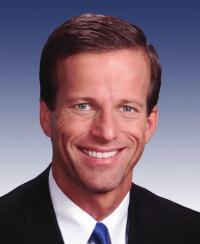 Sen. John Thune
Sen. John Thune Senate Republican Average
Senate Republican Average See Full Scorecard60% in 2002.
See Full Scorecard60% in 2002.
Overall, the 2-party vote diverged by at least 1 point in the “wave” party’s direction in 24 races, against it in 11, and within 1 point of target in 11. Of the closest races, there were 12 of these poll misses in the wave direction, 5 in the opposite direction, 5 on target; in the rest, 12-6-6. So, races that are extremely close are not really any more or less likely to end up off the target than less competitive races, it’s just that those are the ones where 1 point can make the difference.
Of the 24 “misses with the wave,” 17 were Democrats, 7 Republicans. Of the 11 “misses against the wave,” 9 were Democrats, 2 Republicans. In the closest races, the misses were:
6 Democrats with the wave
6 Republicans with the wave
4 Democrats against the wave
1 Republican against the wave
In the less-close races:
11 Democrats with the wave
1 Republican with the wave
5 Democrats against the wave
1 Republican against the wave
So, poll misses are much more likely to favor the Democrat, as I noted last time, but that tendency has been less pronounced in the very closest races, even despite the broader trend in which Democrats have dominated the very closest races.
What is concerning about Colorado and Alaksa this year (and to some extent South Dakota, although that race does not look close) is when you look at the geography and party of the 11 races the poll averages got wrong:
Democrats beating the polls against the wave in Nevada and Colorado (2010) and South Dakota (2002)
Democrats beating the polls with the wave in North Dakota and Montana (2012) and Minnesota (2008)
Republicans beating the polls with the wave in Alaska and Florida (2004), Colorado, Minnesota and Georgia (2002)
Besides the known issue of Democrats flying under the radar with Hispanic voters in Nevada and Colorado and Native Americans in the Dakotas and possibly Alaksa, this suggests that the Democratic ground game may matter more generally in sparsely populated states.
The Governors

It’s sweatin’ time for a bunch of Republican incumbent Governors – Rick Scott, Sam Brownback, Sean Parnell and Paul LePage, while Tom Corbett (the only incumbent in any race whose opponent is over 50%) has had over a year to work on his concession speech:

But for all that peril, assuming the polls are on target, if a little under two-thirds of the final voters break for the GOP, we could suddenly be dealing with a net gain of 6 Governorships. That seems a stretch, and races like Maryland (which wasn’t even in play in the polls a week ago), Rhode Island and maybe even Minnesota are only slightly less of a stretch than the Virginia Senate seat. And remember, the polls underestimated the Democrats in several Governor’s races in 2010 in Connecticut and Illinois (where Pat Quinn was toast in the polls at this point and won), 2012 in New Hampshire, and 2006 in Maryland. Minnesota is the least likely of these, since the Senate race there looks dead as well and Republicans may be less fired up to vote (Bob Ehrlich in Maryland in 2006, similarly, may have been dragged down by Michael Steele’s loss in the Senate race that year). The last week’s trend, which like the Senate trend is yet again positive overall, has been encouraging in New Hampshire and Maryland, both of which remain tantalizingly close, but has seen a sudden reversal in favor of Dan Malloy in Connecticut and against Brownback in Kansas:

Meanwhile, the uncompetitive races remain that way:

I remain convinced of the possibility that the 2014 elections will validate in a very large sense the salience of the poor national environment for Democrats. But with the Democrats’ superiority in operations, Republicans overextended in the Governors’ races, a few underachieving Senate candidates, and residual uncertainty about the polls being off at the margins, there is still plenty of suspense, and plenty of reason for Republican and conservative activists across the country to take nothing for granted.
http://www.redstate.com/2014/11/03/f...vember-3-2014/Join our efforts to Secure America's Borders and End Illegal Immigration by Joining ALIPAC's E-Mail Alerts network (CLICK HERE)
Similar Threads
-
REDSTATE: Clearest Sign Yet the GOP Will Take the Senate: Eric Holder to Resign
By AirborneSapper7 in forum General DiscussionReplies: 11Last Post: 09-27-2014, 05:32 AM -
REDSTATE: Introducing The Senate Breakers Report - The Race To 50
By AirborneSapper7 in forum General DiscussionReplies: 1Last Post: 09-27-2014, 04:40 AM -
Rothenberg changes race rating in Arkansas Senate -Buckle your seatbelts, Senate Dems
By AirborneSapper7 in forum General DiscussionReplies: 0Last Post: 12-20-2013, 06:23 AM -
Nora Craig instructs the NJ Senate Committee on the second amendment - Oath Breakers
By AirborneSapper7 in forum Other Topics News and IssuesReplies: 4Last Post: 05-25-2013, 06:47 AM -
Senate Standoff May Doom Border Funding
By jimpasz in forum illegal immigration News Stories & ReportsReplies: 9Last Post: 07-26-2007, 01:17 AM


 3Likes
3Likes LinkBack URL
LinkBack URL About LinkBacks
About LinkBacks




 Reply With Quote
Reply With Quote


Watch: Paul, Hawley Torch Mayorkas To His Face On Laken Riley's...
04-19-2024, 02:32 PM in illegal immigration News Stories & Reports